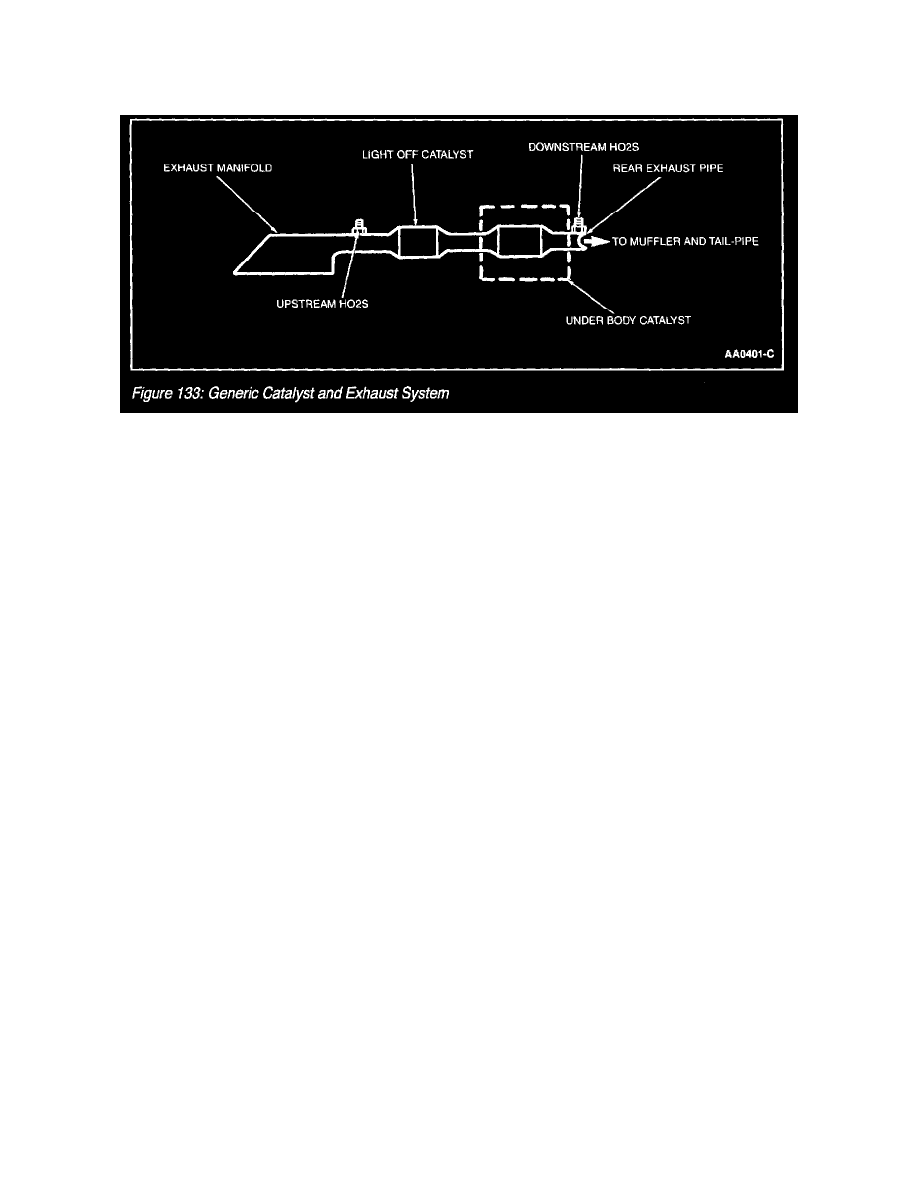F 350 2WD Super Duty V8-5.4L SOHC VIN L (2002)

Catalytic Converter: Description and Operation
Catalyst and Exhaust Systems
Overview
Generic Catalyst And Exhaust System
The Catalytic Converter and Exhaust Systems (Figure 133) work together to control the release of harmful engine exhaust emissions into the
atmosphere. The engine exhaust gas consists mainly of Nitrogen (N), Carbon Dioxide (CO2) and Water Vapor (H2O). However, it also contains
Carbon Monoxide (CO), Oxides Of Nitrogen (NOx), Hydrogen (H), and various unburned Hydrocarbons (HCs). CO, NOx, and HCs are major air
pollutants, and their emission into the atmosphere must be controlled.
The exhaust system generally consists of an exhaust manifold, front exhaust pipe, upstream Heated Oxygen Sensor (HO2S), rear exhaust pipe,
downstream HO2S, a muffler and an exhaust tailpipe. The catalytic converter is installed between the front and rear exhaust pipes. Catalytic converter
efficiency is monitored by the On Board Diagnostic (OBD II) system. (Refer to OBD II Monitors to Catalyst Efficiency Monitor-Federal Test
Procedure for specific information.)
Catalytic Converter
A catalyst is a material that remains unchanged when it initiates and increases the speed of a chemical reaction. A catalyst will also enable a chemical
reaction to occur at a lower temperature. The concentration of exhaust gas products released to the atmosphere must be controlled. The catalytic
converter assists in this task. It contains a catalyst in the form of a specially treated ceramic honeycomb structure saturated with catalytically active
precious metals. As the exhaust gases come in contact with the catalyst, they are changed into mostly harmless products. The catalyst initiates and
speeds up heat producing chemical reactions of the exhaust gas components so they are used up as much as possible.
Light Off Catalyst
As the catalyst heats up, converter efficiency rises rapidly. The point at which conversion efficiency exceeds 50% is called catalyst light off. For most
catalysts this point occurs at 475 to 575°F (246 to 301°C). A fast light catalyst is a Three Way Catalyst (TWC) that is located as close to the exhaust
manifold as possible. Because the light off catalyst is located close too the exhaust manifold it will light off faster and reduce emissions quicker than
the catalyst located under the body. Once the catalyst lights off, the catalyst will quickly reach the maximum conversion efficiency for that catalyst.
TWC Conversion Efficiency
